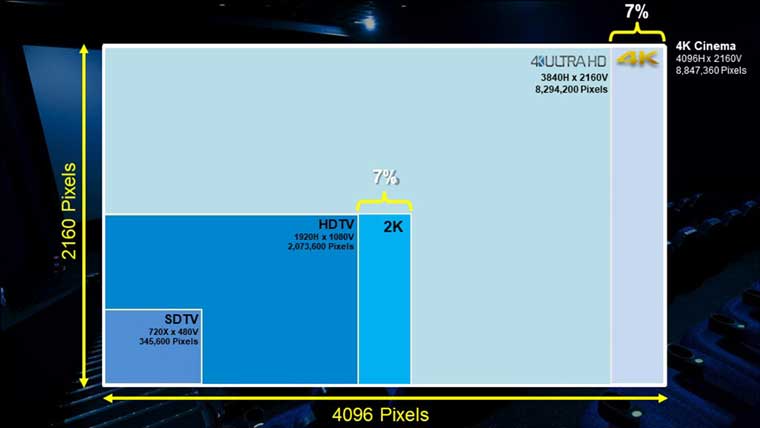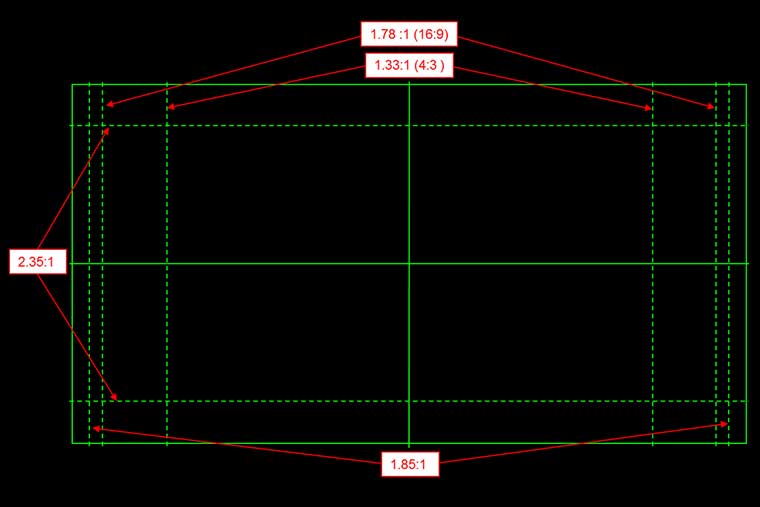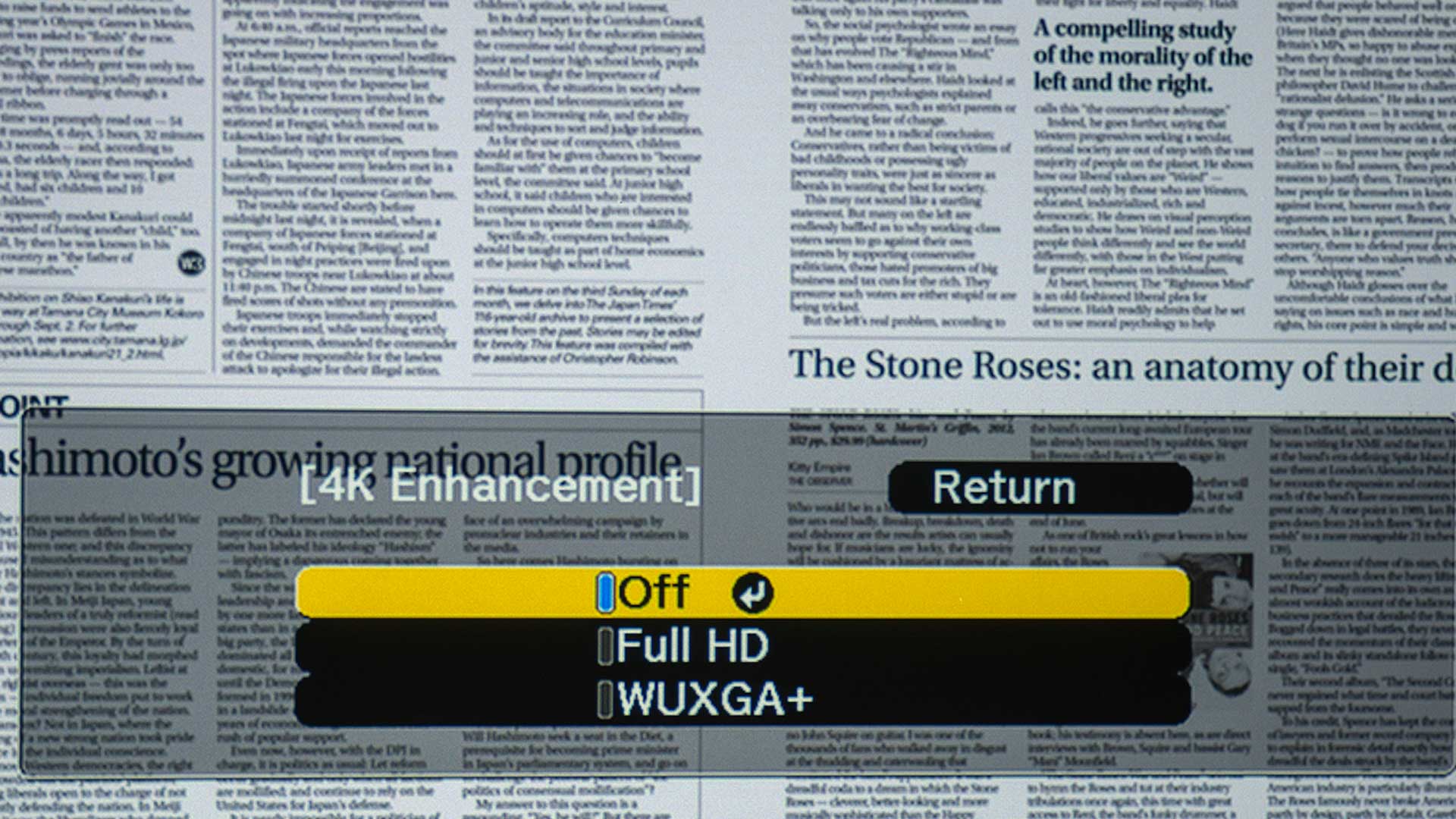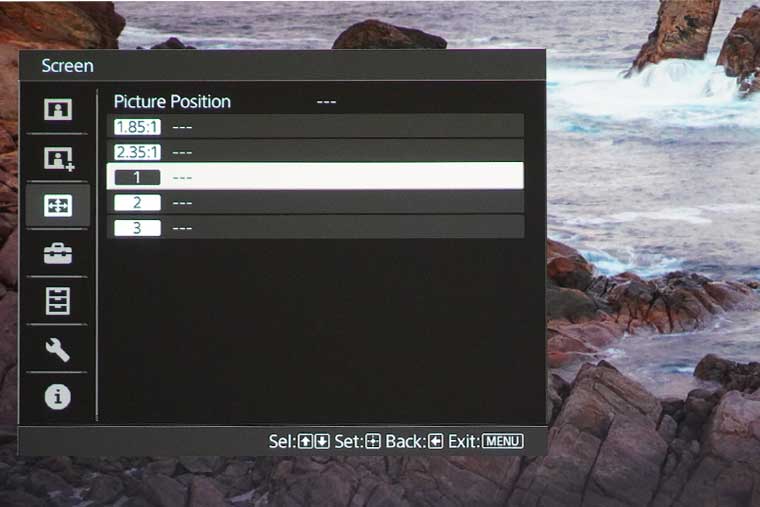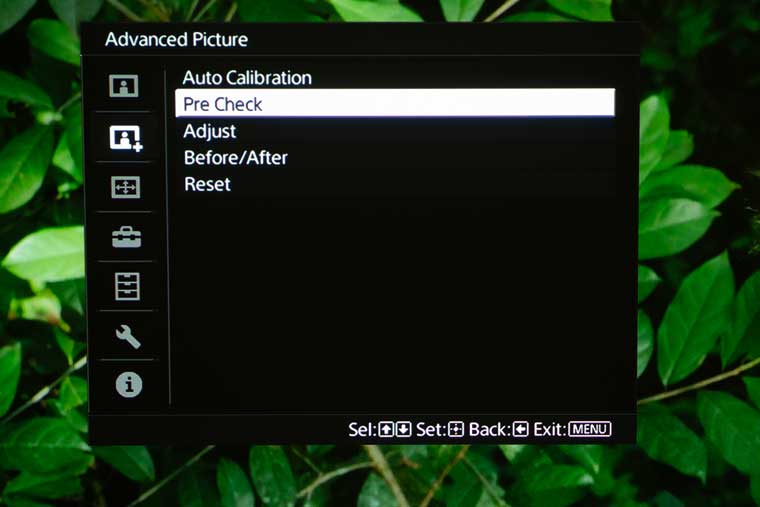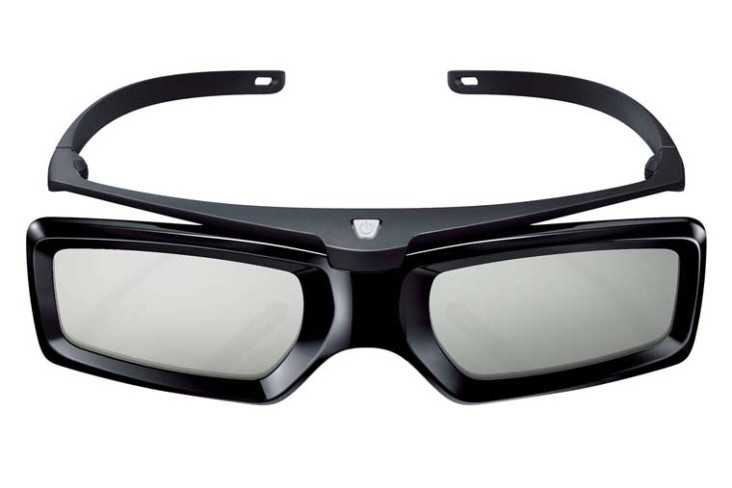Sony VPL-VW715ES 4K SXRD Projector Review - Special Features 2: Native 4K Resolution, Lens Memory, Built-in Auto Calibration, Low Latency Mode, 3D Compatible
The Sony VW715ES uses Sony’s 4K SXRD (4096 x 2160) panels, and the projector can also accept HDR signals up to 4K@60P. Since this is a native 4K unit, unlike a 2K pixel shifting projector, it can faithfully reproduce all 8.8 million pixels found in 4K cinema content.
The VW715ES uses the same 3 chip 4K SXRD imaging system used in Sony 4K cinema projectors found in the best movie theaters in the world. It increases contrast, color depth, and minimizes the "screen door effect" (blocky image distortions) compared to most 3LCD projectors.
While most 4K UHD flat panels have a resolution of 3840x2160, the VPL-VW715ES is a native 4K projector so it delivers the same 4096x2160 resolution as your favorite 4K movie theater projector.
This is important to remember when setting up a Sony 4K SXRD projector on a 16:9 screen. Since the projector’s native aspect ratio is 17:9, you cannot use the test pattern's solid outer lines to align the screen.
There are several pixel-shifting HD (1920 x 1080) projectors on the market, which do a good job resolving fine details that cannot be discerned on a basic 1080p projector. Also, a lot of 4K content lacks enough fine detail required or is viewed so far away that the difference between 4K and pixel shifting cannot be perceived.
However, if you do a side-by-side comparison of a true 4K projector versus a 1080P or W pixel-shifting projector, using highly detailed content, the difference in resolution is noticeable from a normal viewing distance.
The images below show the resolution difference between a Sony 4K SXRD unit and an HD projector utilizing pixel shifting when native 4K content is displayed.
A notable step up features over the VW295ES is Picture Positioning. These Lens Memories offer the ability to save different motorized lens settings, like one for HDTV and one for widescreen movies. This is a useful feature for someone who opts for a 2.35:1 screen because they want to take advantage of the entire screen area when watching widescreen movies.
If the projector is adjusted, so a widescreen movie perfectly fits the widescreen both horizontally and vertically. Then the viewer switches to HDTV or a made-for-TV movie in a 16:9 aspect ratio. The picture will overshoot the top and bottom of the screen by about 20%.
To correct this issue, you would have to zoom the projector in a bit manually, make the image smaller, and adjust the lens shift to fit the entire 16:9 image fits the widescreen. Note that when viewing 16:9 on a widescreen, you will see black bars on the sides.
If a projector does not have a motorized lens with memory, you would have to manually adjust the zoom and shift settings each time you switched from movies to broadcast content. This would be extremely cumbersome, especially if the projector is ceiling mounted. With Lens Memories, once you create a setting for HDTV and widescreen content, it’s just a quick press of a button for the right size image to be projected.
Another great feature found on Sony’s 4K SXRD projectors is Auto Calibration. This is important on lamp-based projectors like the new VW715ES because lamps shift color quite a bit as they age (starting from day one). Many calibrators will tell you to wait at least a couple hundred hours before calibrating.
If you replace a projector’s lamp, the replacement likely won’t have the same color characteristics as your previous lamp, which usually means you would have to pay to have the projector recalibrated.
Once a Sony 4K SXRD home theater projector has been calibrated, you can use the Auto Calibrate feature (maybe once or twice a year) to restore the picture to the way it looked the day the projector was first calibrated.

